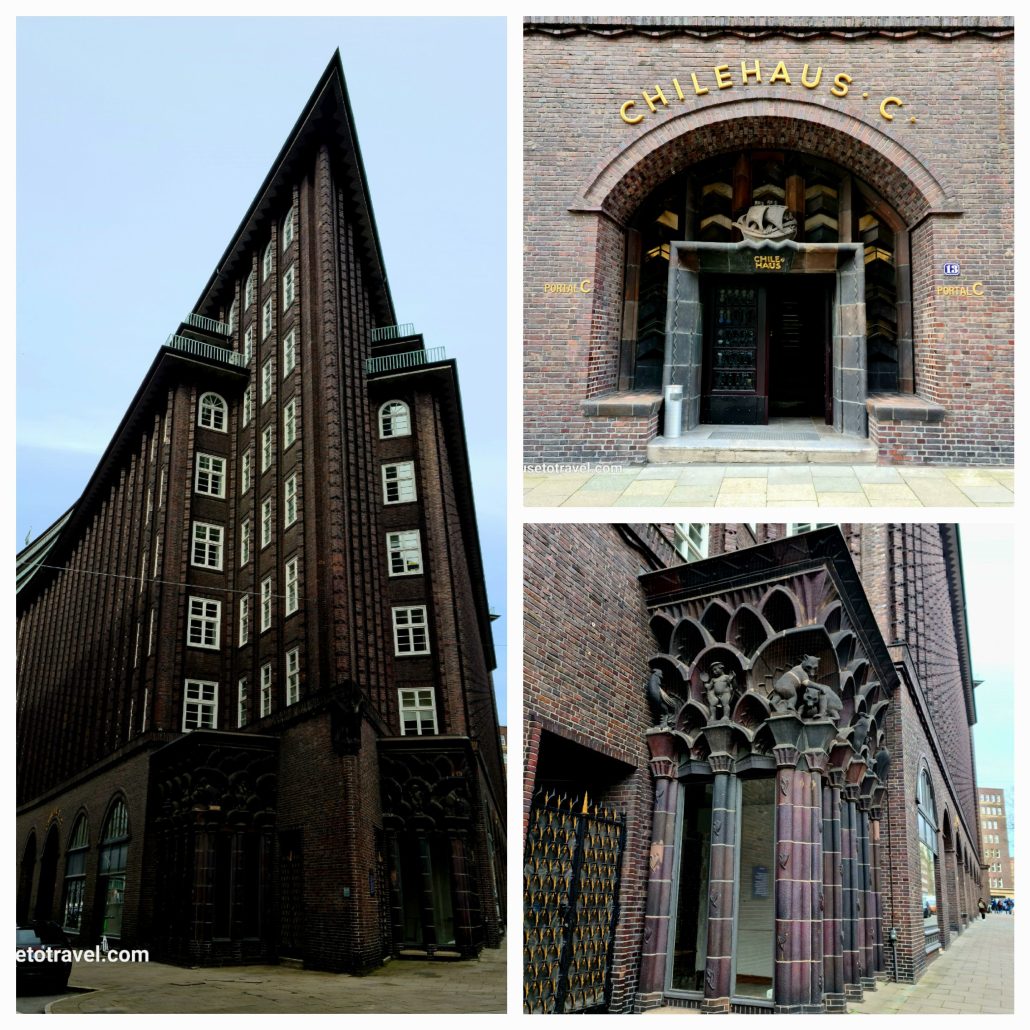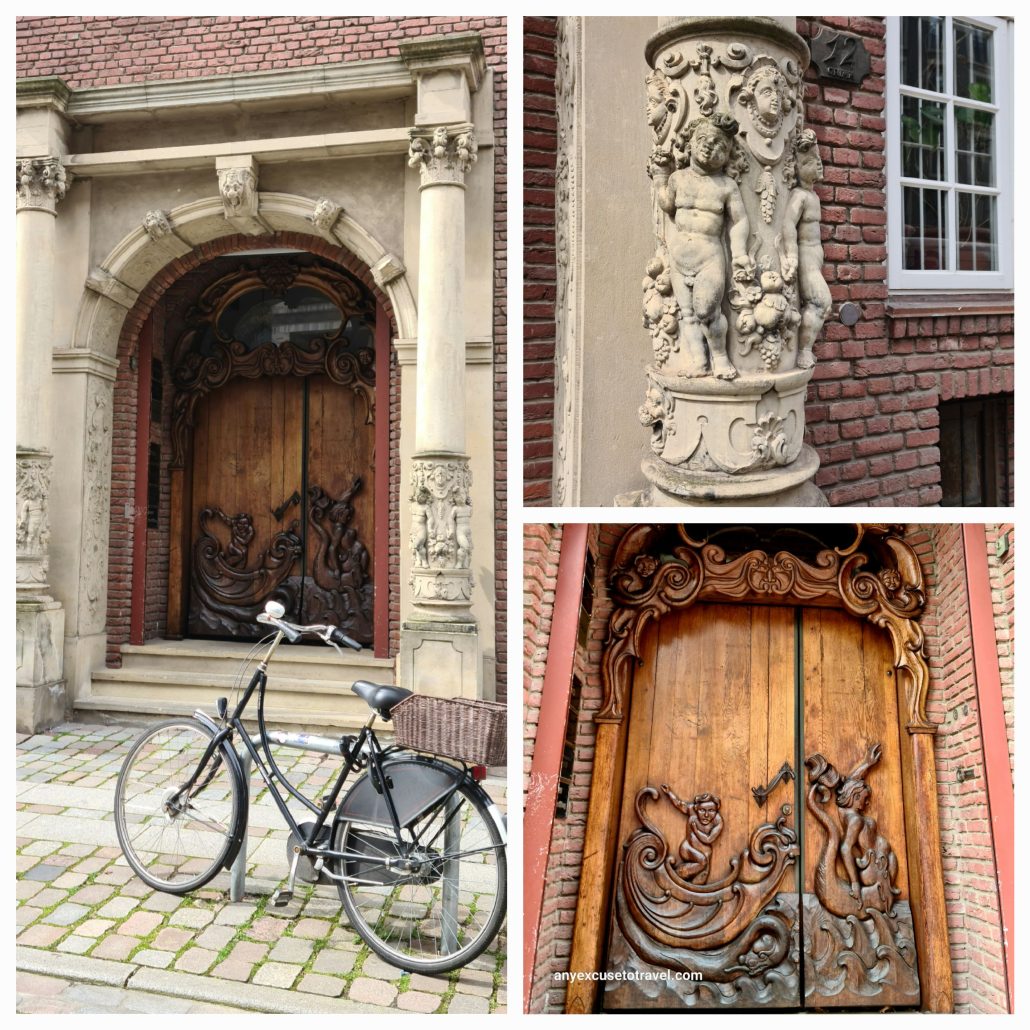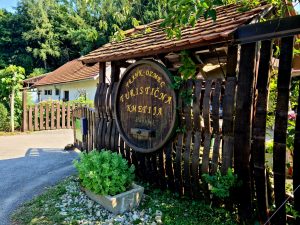I wasn’t in Hamburg long enough to do it justice. I literally had a few hours to get a taste of what seems to be a remarkable, if unremarked, city. Given all I had to choose from, and there’s a lot, I went for the churches. And what I could see in between.
The city beats Venice, London, and Amsterdam when it comes to the number of bridges. It has more than all three cities combined. I crossed some of the 2500+ in the city but it would take more time than I had to cross them all.

Lake Alster, home to over 100 swans, is right in the city. I was reminded of the Peabody Hotel in Memphis where the Duck Master escorts the ducks from the penthouse to the pond in the lobby. In Hamburg, the Schwanenvater (Swan Father) escorts the swans from Lake Alster (think summer home) to the non-freezing lake of Eppendorder Muhlenteich.
Speaking of cool jobs, “greeting captains” are stationed at Willkomm-Hoft (Welcome Point) on Hamburg Harbor, where they play the national anthem of every ship that passes through. As the anthem plays, they lower the Hamburg flag and raise the foreign flag.
A city with more millionaires than any other German city, the warehouse district is a testimony to the colonial riches shipped into the port. The tall brick warehouses built on oak pilings dot the canals, with both water and street access. Known as the Speicherstadt, this part of town is a UNESCO World Heritage site (lead photo).

The building that caught my attention was the Chilehaus. Designed by architect Fritz Höger, it’s an example of 1920s Brick Expressionism. Buildings fascinate me. Doors fascinate me. Statues fascinate me. Hamburg has it all, in spades.


The first church we happened across was St Petri, the city’s oldest church. It dates to 1195 and was remodelled in the 1500s in Gothic style. It’s famous for its church music and its Bach choir. Note to self duly made.

We lucked out and got to St. Michaelis church just as a prayer service began. I’ve no clue what was being said but the organ music was divine. It’s the city’s biggest church and, back in the day, its 132-metre spire was like a beacon for ships coming up the Elbe. It’s not had much luck though. This is the third church on this site. The first was a victim of lightning in 1750. The second was gutted by a fire in 1906, renovated, and then bombed during the war. What’s standing today is spectacular. It is a beautifully designed Baroque space. The composer, Johannes Brahms, was both baptised and confirmed here. It also has the distrintion of being built for Protestants, unlike others in the city that started off as Roman Catholic and converted during the Rerfomation. If it’s the only active church you visit in the city, this is the one to see.

The most stunning, from a visceral sense, has to be the church of St. Nikolai, or what remains of it. The original Gothic basilica was razed by the Great Fire in 1842. Rebuilt in 1874, it had the distinction, albeit a brief one lasting only a couple of years, of being the world’s tallest building. Then, the bombs of WWII came and what’s left is what we see today. No longer an active church, it’s now a memorial site, paying homage to those who’ve died in wars or suffered from tyranny. If you take the time and sit and feel, it’ll speak to you. The two bronze sculptures by Edith Breckwoldt are worth spending time with.
Examination is a memorial to the Sandbostel WWII POW camp where more than 50,000 people died, about 10,000 of whom were prisoners from the Neuengamme concentration camp. The man, with his head in his hands, sits on a base of bricks that came from the barracks,.

Earth Angel stands six metres high on a base inscribed with the artist’s messages in eight languages. The message ‘intends to express that all knowledge rests within the human being: if he finds his way back to himself, he will also find peace; this in turn is a prerequisite for peacefulness between people.’

As with St Michaelis, the tower can be climbed to get a panoramic view of the city.
St. Katharinen Church boasts the oldest stonework in the city, dating to the thirteenth century. Inside it’s plain and simple, more like an art gallery than a church and indeed the sculptures on display are worth a visit. I’m not sure if it was a temporary exhibition or if they’re permanent.

It was a whirlwind tour before I flew out. I’d spent a couple of days in nearby Geesthacht; Hamburg was never the destination. That said, I’d go back in a heartbeat.
And to the question that Hamburgers are probably sick of answering: Did hamburgers come from Hamburg? Sort of. Apparently, German immigrants introduced Hamburg steaks (made of minced meat) to America; the Americans added the buns and the trimmings. It was a joint effort.
For next time
- Check out the Beatles connection with the city. It’s where it all began. They played about 270 gigs in Hamburg in the early 1960s.
- Visit the opera, the oldest in the country
- Check St Petri for concerts
- Visit the Russian Orthodox Gnadenkirche, in the Karolinenviertel so see the icons
- Visit the Flussschifferkirche – the boat church
- Have breakfast in the fishmarket
- Take a side trip to Sandbostel
- Visit the crypt in St Michaelis
Share this:
- Click to share on X (Opens in new window) X
- Click to share on Facebook (Opens in new window) Facebook
- Click to share on Pinterest (Opens in new window) Pinterest
- Click to share on LinkedIn (Opens in new window) LinkedIn
- Click to share on Reddit (Opens in new window) Reddit
- Click to share on WhatsApp (Opens in new window) WhatsApp
- Click to share on Pocket (Opens in new window) Pocket
- Click to share on Telegram (Opens in new window) Telegram
- Click to email a link to a friend (Opens in new window) Email







2 responses
A comprehensive travelogue – so how many weeks were you there?
Four. Hours, that is.